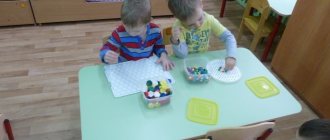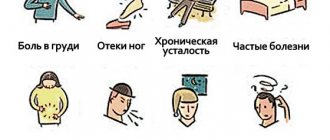By visual memory we mean a special type of memory that is responsible for recording and reflecting visual images, as well as for their use in the process of communication.
Visual memory is responsible for storing and reproducing received visual images. With its help, we remember people's faces, navigate the area and recognize objects. When we see a person's face, our brain undergoes a complex process of comparing this visual image with those already stored in our long-term memory. If the images coincide, then we identify this person as an acquaintance. This entire process happens in a matter of seconds.
It also happens that when we meet a person for the second time, we cannot immediately remember when and under what circumstances we saw him. There are also people who find it difficult to recognize the face of the person with whom they spent the whole day. One of these people is mentioned in the documentary “My Extraordinary Brain. Make me a genius."
The main character of the film had a phenomenal visual memory, which was by no means given to her by nature. This result was a reward for hard training that lasted for years. We highly recommend watching this film if you haven't seen it yet.
It should be noted that visual memory is very related to imagination. Therefore, by developing your imagination, you contribute to the development of visual memory, and vice versa.
Visual memory training
So how to develop visual memory? Fortunately, this can be done with the help of special training exercises and games to develop visual memory.
For example, to train visual memory, you can perform the following tasks:
Use the Spot the Difference pictures.
This is one of the most popular tasks, and there are many of them on the Internet.
Sometimes we think that this is just child's play, but this exercise helps us pay attention to details, which subsequently leads to better memorization.
Remember and describe people's appearance.
Each of us has many acquaintances. Of course we will recognize them. But we are unlikely to be able to fully describe their appearance and facial features the first time. Try to make an identikit or describe in detail at least one of the people closest to you. You will see that it is not so simple. But nothing is impossible either, try, and over time it will turn out better and better.
Draw from memory.
Try to make sure that you always have a notepad and pencil at hand. Try, in your free minutes, to redraw tree branches, a subway map, curves on a stone... First redraw, and then draw from memory. Try to maintain all proportions and line thickness. Of course, you can draw anything you want. Drawing in itself is an exercise for developing visual memory. In this case, it is not so much the ability to depict well that is important, but the desire to transfer remembered images from memory to paper as accurately as possible.
Use matches as auxiliary material.
Take a few matches (5 is enough to start with) and throw them on the table. Look at the shape they formed. Then turn away and try to reproduce the same figure using other matches. Compare how similar they are. If you do well enough with 5 matches, try increasing their number.
Connect other senses.
Imagine what this or that object would sound like, what color the number or letter would be. By connecting sounds or smells to visual images, you will enable your brain to better retain them in memory.
Remember the events of the past day
Before going to bed, remember the events of the past day in the form of “pictures”, “scroll through the event feed”, trying to clearly “see” all the details. As you can see, no special preparations are required for such a workout. Only a habit, if you decide to do it.
Memorizing an item
Find an object that pleases you and look at it for 3-5 minutes. Then close your eyes and try to imagine this object as brightly and clearly as possible. Give this approximately 3 minutes. Try again and again. When it seems like it’s working out, move on to the next stage: prepare a sheet of white paper, place it behind you, and after studying the object, turn your back to it and look at the white sheet, try to “see” a clear image of this object on it.
Cognitive trainers
Use online games to develop visual memory. On our website you can develop visual memory with the help of special gaming simulators.
How to develop memory and attention in a child
Cognitive functions in adulthood largely depend on how developed and trained a person’s brain is in childhood. For the proper development of a child’s memory, experts recommend the following:
- Choose educational and intellectual games that will be interesting to your baby. Nowadays, children's stores do not have a shortage of assortment, so finding suitable development toys will not be difficult.
- Avoid multitasking. The child must learn to focus on one object. Make sure that the study of the poem is not combined with listening to TV in the background.
- Practice visualization. You can voice a fictitious situation to your child so that he describes its details. For example, say: “A cyclist is riding along a forest road.” Let the child imagine and tell what color the bike is, what the person sees along the way, what he is wearing, how wide the road is, etc. You can also ask him to draw this situation.
- Invite your child to tell in detail various events from his life: how his day at school went, what the story he read was about, what rules should be used to play his game on the computer, etc.
- Make sure your child's sleep is complete and healthy. Don't let yourself fall asleep watching TV or your phone, because the blue light from the screen makes sleep shallow and restless, which doesn't allow your brain to rest properly.
- Another couple of important components for brain health are physical activity and good nutrition. Correct intake of vitamins and walks in the fresh air contribute to the development of attention and facilitate the assimilation of new information.
Visual memory in children
Even in preschool age, children actively involuntarily memorize words, objects, concepts, images, therefore, during the “child-why” period, it is especially favorable to use special games designed to train visual memory in children. This will prepare the child well for school and will help him perceive complex and voluminous information. Voluntary memory requires effort and the manifestation of attention and will to remember, this also applies to voluntary visual memory. General recommendations for good memorization are:
- What is interesting, bright, and emotionally presented is remembered better.
- The beginning and the end are the most memorable moments.
- What is explained simply and clearly will be remembered better.
- If, in addition to visual, other types of memory were involved (tactile, auditory, motor, etc.), then memorization will be more effective. The most common are mixed types of memory, especially visual-motor or, as it is also called, visual-motor memory.
Associative series
Today our children, and you and I, experience constant stress from an overabundance of information that is difficult to assimilate. The brain sometimes automatically blocks part of this flow, and not always the excess. Therefore, natural curiosity and innate talent for memorization may not work in the average modern child, so we have to work on it.
To begin with, it would be good to test your child (and yourself at the same time)











